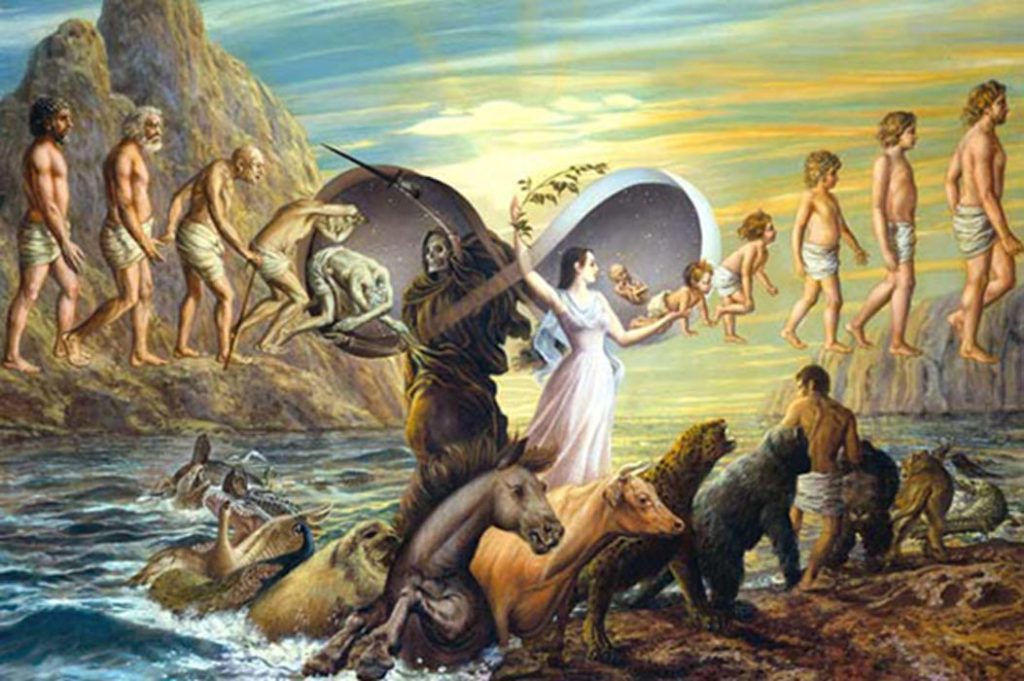In the tapestry of human history, tales of extraordinary individuals who defy the grasp of mortality have always held a profound fascination. These immortals, whether born or created, have etched their stories into the very core of our collective imagination. Join us on an expedition through time and myth as we delve deep into the captivating realm of immortality and its enduring presence in the annals of human culture.
Uruk: The Dawn of Immortality

The enigmatic figure of Uruk, hailing from the ancient Mesopotamian city, emerges as one of the earliest legends surrounding immortality. He was, by all accounts, an ordinary man bestowed with an extraordinary gift—the inability to succumb to death’s embrace. While Uruk’s existence may seem like a mere legend, it beckons us to ponder the tantalizing notion that immortals and their silent observance have been intertwined with humanity’s narrative since time immemorial.
Gilgamesh and the Immortal Connection

Gilgamesh, the illustrious king of Uruk, strides onto the stage of history some two millennia after Uruk the Immortal. Mythology weaves a tantalizing narrative suggesting that Uruk served as a mentor to Gilgamesh during his reign. Born to Lillah and Ninsun, Gilgamesh walks the fine line between mortality and immortality, blurring the boundaries between myth and reality.
Dual Destinies: The Saga of Enkidu

Within the intricate tapestry of immortality, the tale of Enkidu emerges as a shining gem. Nine immortal women, heralding from the realm of fate, foretell his destiny at birth. Among them, the youngest and wisest predicts a dual existence for Enkidu—one marked by wrongdoing and the other defined by righteousness.
The prophecy extends further, as the wise fate anticipates a grand gift arising from Enkidu’s second life. Her foresight proves true. In his initial existence, despite his bravery, strength, and wisdom—qualities prophesied by the first eight fates—Enkidu stumbles, entangling both his kingdom and personal life in a web of mistakes. As he lies on the precipice of death, he beseeches forgiveness from the prescient fate who had foreseen his dual destiny.
In a breathtaking moment of intervention, the immortal woman materializes before him, winding back the clock to a time when Enkidu was young once more. In his reincarnated life, he treads the path of righteousness, marries Ninsun, and together, they beget Gilgamesh—the magnificent gift long foretold by the fates.
Sharon’s Unwanted Immortality
Sharon, a figure embedded in Etruscan culture, stands as a poignant testament to the burdens that immortality may bear. Whispers abound that he embarked on a harrowing journey to the depths of Hell and back, driven by a singular yearning—to escape the eternal clutches of immortality and embrace the sweet release of death. His tale offers a glimpse into the hazy boundaries between heroes who traverse the realms and immortals who dwell within the realm of the living.
Mythological Distractions: Vampires, Werewolves, and the Church
Vampires and werewolves, with their shroud of allure and dread, claim their places as iconic figures in the pantheon of immortality. A tantalizing theory weaves through the tapestry of existence—that these creatures were conceived by actual immortals, weaving tales to veil their true presence. Taulreus lends credence to this notion in his tome, “Gheestelycke Sermoonen.” These mythical beings, with their haunting visages, serve as a calculated distraction, diverting humanity’s gaze from the concealed world of immortal humans.
Throughout history, the Church wielded its authority to suppress any discourse concerning immortal beings in corporeal form. Alchemists, relentless in their pursuit of the Philosopher’s Stone—an elusive substance rumored to yield the elixir of life—faced relentless persecution and systematic censorship.
Later Legends and the Pursuit of Immortality

Within the pages of “Gheestelycke Sermoonen,” an enthralling narrative unfurls—a young mercenary ascends to leadership after bearing witness to the demise of his chief in battle. As the years unfurl, he withdraws from the battleground and retires to a city nestled somewhere near the banks of the Nile. There, amidst the bustling marketplace, the elderly man encounters his erstwhile commander, a man he believed long lost to the sands of time. Astonishingly, the commander stands unaltered by the passage of years. In a moment of profound revelation, the old man inquires of his comrade’s true nature—an immortal. His old friend discloses his identity and shares that he has fulfilled his destined path.
Count Saint Germain and Nicolas Flammel emerge as noteworthy latecomers to the enigmatic tapestry of immortality. The former boasts a prominent place in the annals of history, while the latter is credited with the discovery of the Philosopher’s Stone—a key to creating the elixir of life, bestowing upon him the gift of immortality.
The Enigmatic Realm of Immortals
The global tapestry of legends and myths is embroidered with stories of immortality, each with its unique essence. Some individuals are born immortal, while others ascend to this status through alchemical means, wielding the fabled Philosopher’s Stone and the elixirs of everlasting life. Yet, the veracity of these tales remains veiled in enigma. Could it be that these stories were meticulously crafted by real immortals, concealing their existence beneath the cloak of myth? The answer to this riddle may forever elude our grasp.
What is the earliest legend of immortality?
Uruk from Mesopotamia is often considered one of the earliest legendary immortals.
Who was Gilgamesh, and how does he relate to immortality?
Gilgamesh, the king of Uruk, had ties to immortality and is believed to have been mentored by Uruk the Immortal.
Tell us more about Enkidu’s two lives
Enkidu’s life was foretold by nine immortal women, with the youngest predicting two distinct destinies—one marked by wrongdoing and the other by righteousness.
Are vampires and werewolves connected to immortality?
There’s a theory that these creatures were invented by real immortals to divert attention from their existence.
Who are some latecomers to the realm of immortality?
Count Saint Germain and Nicolas Flammel are notable latecomers, each with their own immortality story.



